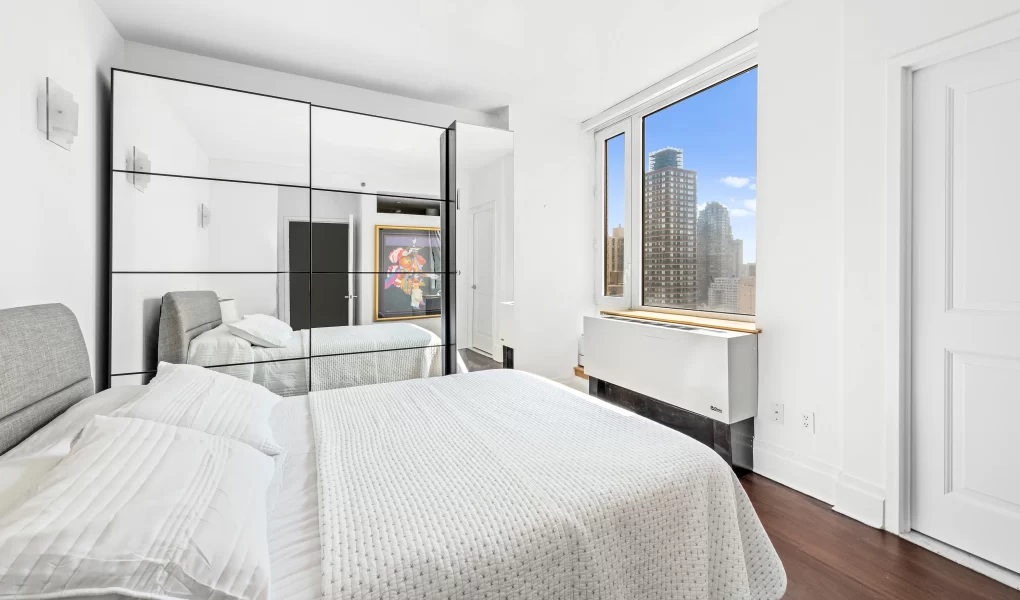In residential architecture and interior design, “split bedroom” refers to a layout where the primary bedrooms are separated by shared living spaces such as the kitchen, living room, or dining area. This design concept has gained popularity recently for its ability to provide homeowners with privacy, flexibility, and functionality. In this comprehensive guide, we’ll delve into split bedrooms, exploring their features, benefits, considerations, and design strategies to help you understand and incorporate this layout into your home.
Understanding Split Bedrooms:

In a split bedroom layout, the primary bedrooms are typically located on opposite sides of the home, with shared living spaces in between. This design creates a distinct separation between the sleeping areas, offering privacy and tranquillity for occupants. Split bedrooms are shared in single-story homes, townhouses, and condominiums, although they can also be incorporated into multi-story dwellings.
Features of Split Bedrooms:
Privacy:
One of the critical features of split bedrooms is the enhanced privacy they provide for occupants. With the primary bedrooms on opposite ends of the home, residents can enjoy solitude and seclusion from the main living areas. This layout is ideal for families, roommates, or multi-generational households seeking separate spaces for relaxation.
Flexibility:
Split bedrooms offer flexibility in terms of occupancy and use. The distinct separation between sleeping areas allows for different sleeping schedules, lifestyles, and preferences among occupants. For example, parents may appreciate having their bedroom on one side of the home. At the same time, children or guests occupy the other, creating a sense of independence and autonomy for all residents.
Accessibility:
Split bedrooms promote accessibility and ease of movement throughout the home. With bedrooms located away from the main living areas, occupants can navigate the space without disturbing others who may be sleeping or relaxing. This layout mainly benefits households with elderly or mobility-impaired individuals who require unobstructed pathways and minimal noise.
Natural Light and Views:
Split bedrooms often feature windows on multiple sides of the home, allowing for ample natural light and views of the surrounding landscape. This design maximises daylighting and bedroom ventilation, creating bright, airy spaces promoting health and well-being. Residents can enjoy panoramic views of the outdoors while maintaining privacy and comfort within their sleeping quarters.
Benefits of Split Bedrooms:
Privacy and Personal Space:
Split bedrooms offer individualised sleeping areas for occupants, allowing for privacy, relaxation, and personalisation. Each bedroom becomes a private retreat where residents can unwind, recharge, and express their style without interference from others.
Reduced Noise and Disturbance:
By separating the bedrooms from the main living areas, split bedrooms minimise noise and disturbance between sleeping and living spaces. This layout is conducive to peaceful rest, ensuring that occupants can enjoy uninterrupted sleep and downtime without disruptions from household activities.
Enhanced Comfort and Livability:
Split bedrooms contribute to the overall comfort and livability of the home by providing well-defined sleeping zones that cater to the needs and preferences of occupants. Whether it’s a spacious main suite for parents or cosy guest bedrooms for visitors, each bedroom in a split layout can be tailored to meet specific requirements for comfort, storage, and functionality.
Increased Property Value:
Homes with split bedroom layouts are often perceived as more desirable and marketable, increasing property value and appeal among prospective buyers. The flexibility, privacy, and functionality offered by split bedrooms appeal to a wide range of homeowners and can contribute to a higher resale value for the home.
Considerations for Split Bedrooms:
While split bedrooms offer numerous benefits, there are some considerations to keep in mind when designing or selecting a home with this layout:
Floor Plan Layout:
Carefully consider the floor plan layout to ensure that the split bedrooms are situated in a way that optimises privacy, accessibility, and functionality. Pay attention to the placement of shared living spaces, entrances, and circulation paths to create a seamless flow throughout the home.
Noise Control:
Implement soundproofing measures to minimise noise transfer between the bedrooms and shared living areas. This may include installing sound-absorbing materials in walls, floors, and ceilings and selecting solid-core doors and double-glazed windows to reduce sound transmission.
Lighting and Ventilation:
Ensure that each bedroom in the split layout receives adequate natural light and ventilation. Consider the bedrooms’ orientation and windows’ placement to maximise daylighting and airflow while maintaining privacy and security.
Storage Solutions:
Incorporate ample storage solutions in each bedroom to accommodate clothing, bedding, and personal belongings. This may include built-in closets, wardrobes, shelving units, and under-bed storage to maximise space and organisation.
Design Strategies for Split Bedrooms:
Symmetry and Balance:
Create a sense of symmetry and balance in the split bedroom layout by mirroring the design elements and features on each side of the home. This creates visual harmony and cohesion between the bedrooms, promoting a unified and cohesive design aesthetic.
Functional Zones:
Divide each bedroom into functional zones for sleeping, lounging, and storage. Consider incorporating separate areas for relaxation, work, and dressing to optimise the functionality and versatility of the space.
Customisation and Personalization:
Encourage customisation and personalisation in each bedroom to reflect the individual tastes, preferences, and lifestyles of occupants. Allow residents to choose their colour schemes, furnishings, and decor to create personalised retreats that feel like home.
Connectivity and Integration:
Foster connectivity and integration between the split bedrooms and shared living spaces to promote interaction and communication among occupants. Use design elements like open sightlines, cohesive colour palettes, and cohesive design themes to create a sense of continuity and connection throughout the home.




